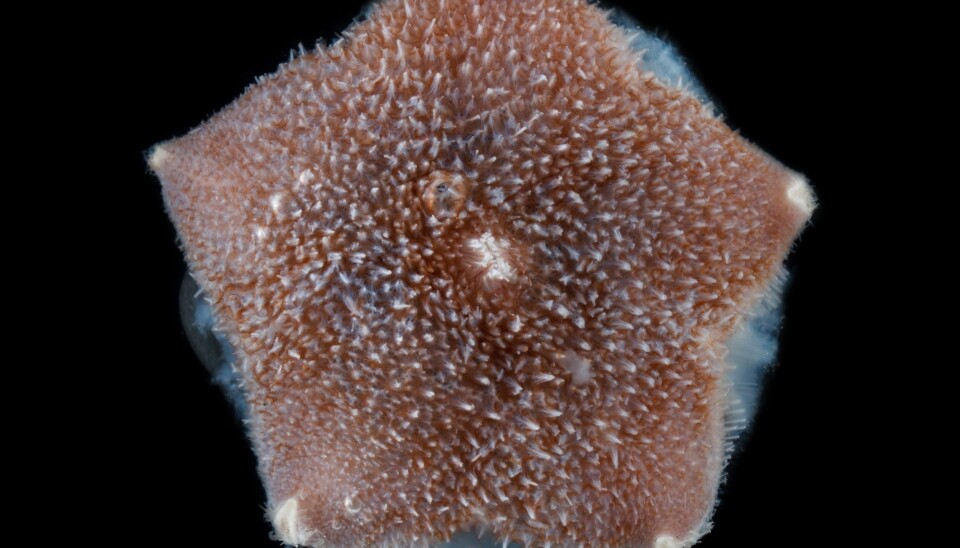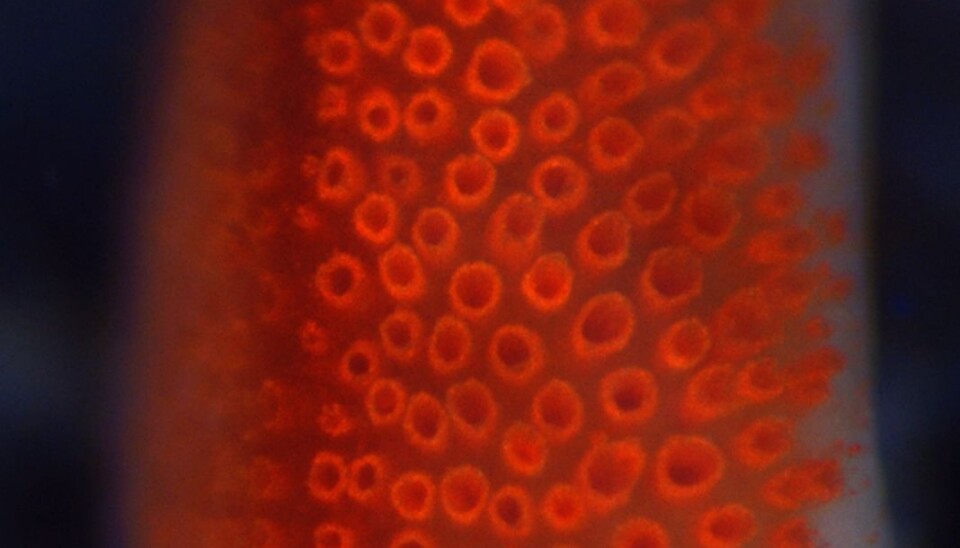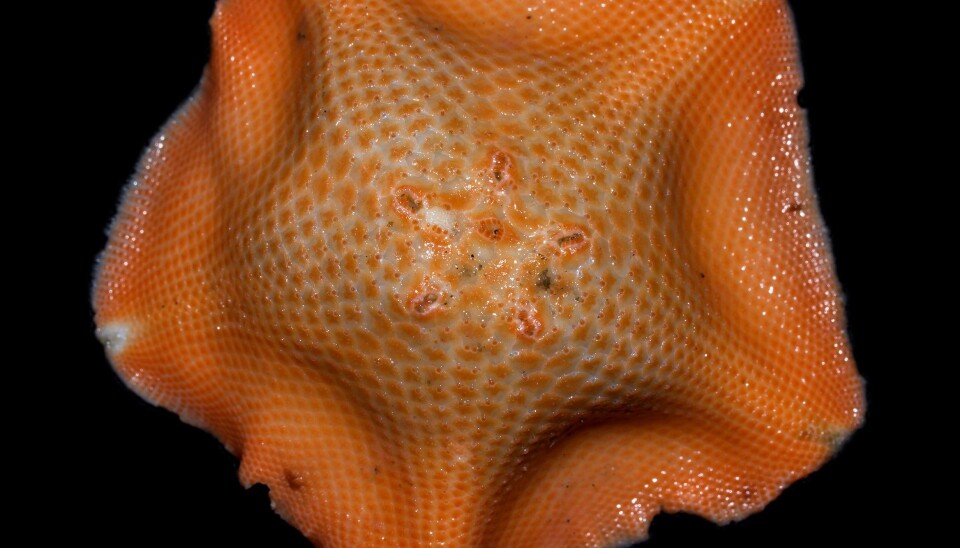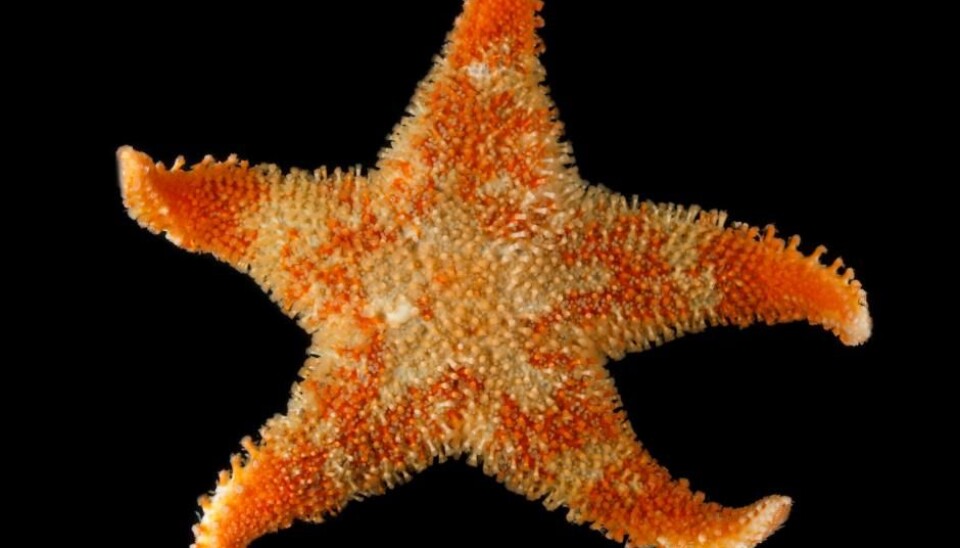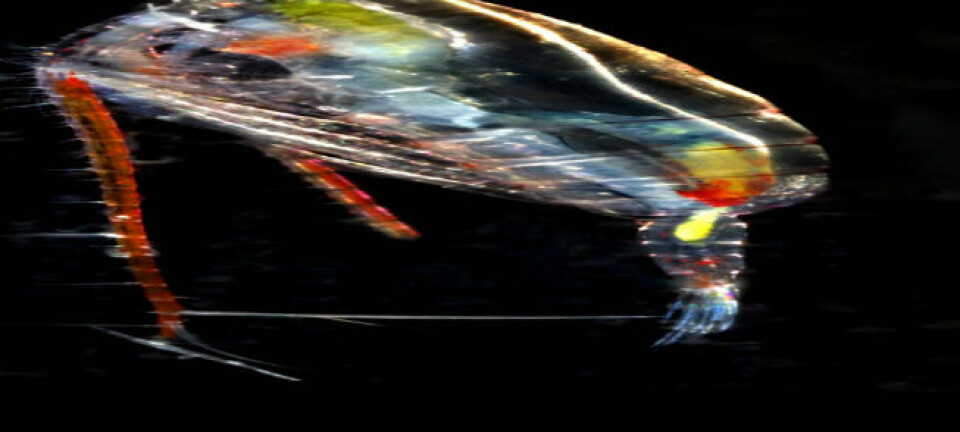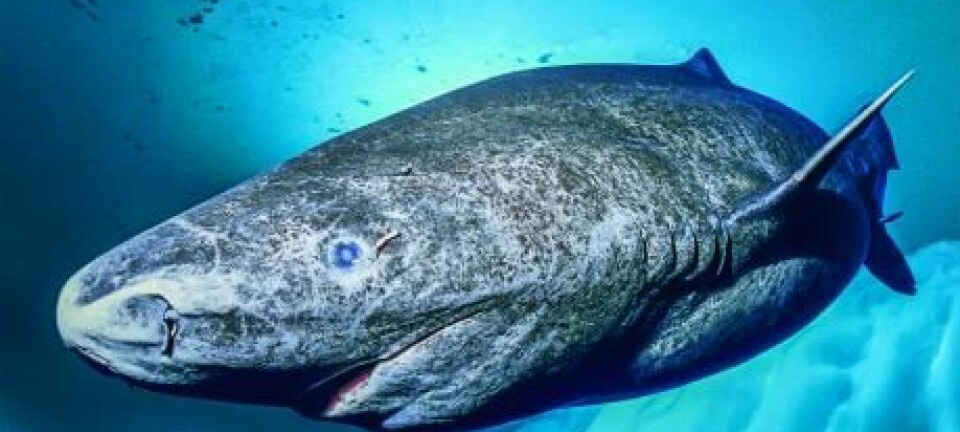Stunning starfish illuminates the dark Arctic
In the dark deep ocean around Greenland, scientists have discovered starfish with surprisingly good eyes and the ability to light up the dark
The deeper you descend into the ocean, the darker it becomes. At some point, all sunlight disappears and the sea is pitch black. Almost.
In a new study, scientists have described bioluminescent starfish that live in the deep seas off Greenland.
The starfish are thought to use the light to find their way through the dark and to communicate with potential partners.
“Our hypothesis is that they use light to send signals to each other and perhaps show that they want to mate. It’s an advanced form of communication, which was previously unknown in animals like starfish,” says Anders Garm, associate professor at the Department of Biology, at the University of Copenhagen, Denmark, and lead-author of the new study.
Read More: Climate Change draws invasive species to the Arctic
A surprising find
In the study, scientists investigated 13 species of starfish from Greenland, from both shallow and deep water habitats. Surprisingly, all species except one had eyes.
“We had assumed that starfish from the deepest and darkest places didn’t have eyes. Animals that live in complete darkness often lack sight and instead use other senses such as sense of smell to navigate,” says Garm.
“But we were surprised when we discovered that we were wrong. Three of the starfish that we studied live more than 400 metres deep where there’s never sunlight. But all three had eyes,” he says.
One of the starfish species, the deep sea Novodinia Americana, had such a well developed eye that, according to the new study, it supports sight that is better or just as good as starfish living in shallow sunlit waters.
Read More: Greenland could be home to several coral reefs
Eyes on their legs
So what did the starfish use their eyes for in the darkness the deep ocean?
“It was really interesting for us that two of the species are bioluminescent and able to produce light. Suddenly the well-developed eyesight makes more sense,” says Garm.
The starfish eyes were already thought to be fascinating. Most species have eyes at the ends of their arms, which they use to navigate. But the new study suggests that deep-water starfish also have this ability.
Read More: World’s oldest vertebrate discovered in Greenland
Light in the deep
According to Tobias Wang, a professor of zoology at the Department of Biology, University of Aarhus, Denmark, the new study is yet another exciting example of advanced eyes that develop in the dark.
“We’ve started to discover that a lot of deep sea species can actually see. We didn’t know that 10 to 20 years ago. Even though they live where there’s no sunlight it turns out that many animals can create their own light and use it to communicate,” says Tobias Wang, who was not involved in the study.
Until a few years ago, scientists thought that starfish could only see light and contours, but this view has recently changed, he says.
“They have far better sight that we thought. It’s quite surprising that the arms are at the end of the legs, yet they are so sophisticated that they can image the surroundings,” says Wang. Much of this research came from Garm’s research group, he says.
Read More: Extinct species of giant amphibians discovered in Greenland
Starfish exhibit advanced behaviour
The deepest starfish was collected at 1.5 kilometres deepth with the help of a trawl net, and then studied in the laboratory.
“We can analyse their eyes optically, where we measure their spatial resolution. Meaning, how much detail they can see and how light-sensitive their eyes are,” says Garm.
The starfish demonstrate that even relatively simple organisms can exhibit advanced behaviour.
“Communicating with the help of light is an advanced behaviour that we perhaps didn’t expect to find in animals with a relatively small nervous system. It says a lot about how evolution works. Even if you don’t have a big brain, evolution can still finds solutions, which mean you can exhibit advanced behaviour,” he says.
The new results are published in the scientific journal, Proceedings of the Royal Society B.
---------------
Read More in the Danish version of this article at Videnskab.dk
Translated by: Catherine Jex

